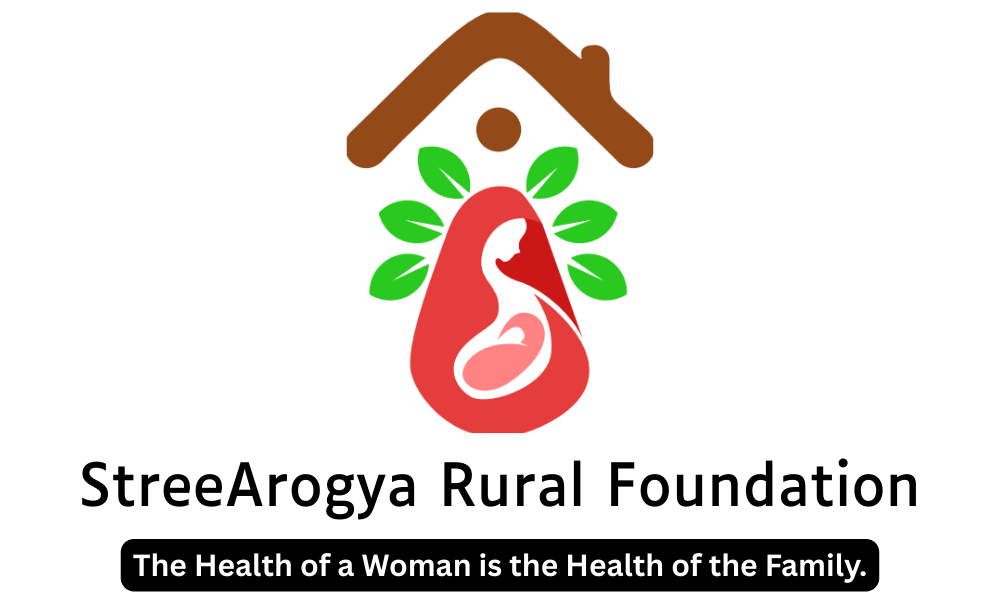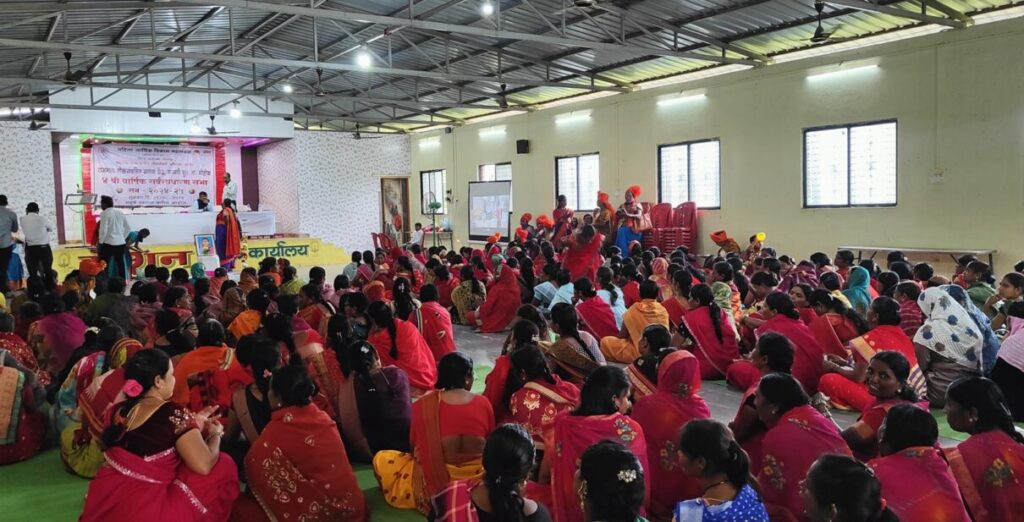It has been over a year since we started full-time operations at StreeArogya Rural Foundation, a non-profit organization to advance the health and well-being of rural women in Solapur. Dr. Kusum, our Community Physician, Executive Director, was invited to talk to about 750-1000 women for the second time in a row in a village in Solapur district, called Kamti. The women were coming together as part of an annual function. All of them were a part of the ‘Bachatgat’ in their respective villages. Bachatgat is a structured community collective that requires rural women participants to save money every week. The collective ties up with banks to offer women financial incentives, subsidies to take loans for self-run businesses, agriculture, and animal farming.
The Bachatgat is governed by a government-aided organization called Umed. The annual function was jointly organized by the Mahila Aarthik Vikas Mahamandal-MAVUM (Women’s Financial Progress Corporation) and Maharashtra Rajya Grameen Jeevanotthi Abhiyan (Maharashtra state Rural Livelihood Mission). Women who participated in the Bachatgat of about 10 villages assembled in a community hall in Kamti village. That is roughly about 100-200 women per village. Dr. Kusum learnt that several women leaders had organized the logistics and curated the 3-hour-long program, especially the CRPs (Community representatives). The women in the picture below, with orange turbans are the CRPs of the region. However, all the people who took up space and time on stage were men. She wondered how ironic this was, especially for a program organized to celebrate women’s progress.
It was heartening to listen to some of the things the men had to say, though. One of them presented the financial report, in which he stated that the running loans disbursed to the collective ran in 1-2 crore INR. One would not imagine/guess that to be true for a rural woman’s microfinance collective. The other whopping number was the loan repayment rate and timeliness. A 100%. No defaults at all. The speaker went on to say how, at the individual level, over a decade ago, banks hesitated to give loans, and now, 2-10 Lakh INR is available in loan amount for a woman. He also mentioned how private, big banks are now ready to offer loans to this collective, looking at their excellent credit history.
Another speaker, a male social worker, detailed the history of MAVUM, almost three decades old. He asked some tough questions, based on his experience in the field. How many women, of the 800-odd women who had assembled, owned agricultural land in their name or even jointly with their spouses? How many owned the houses they lived in, either alone or jointly with their spouses? How many women knew the exact income and expenditure of their household? Hardly 5-8 women raised their hands in response. The social worker then went on to say that this was the biggest challenge to disburse loans to rural women. So, they had to add a clause that loans could be disbursed to women who had a male member of the family (spouse or father-in-law) who owned land as collateral. And, now all these decades later, nothing much has changed in terms of rural women owning property. While many women won awards for running successful businesses, etc., many women procured loans and had little say on how the money was managed in the household.
Dr. Kusum really liked two analogies the social worker gave to the women. One, he said, loan money should be treated as seeds that are sown, so that the money grows like plants into trees that bear fruit for years to come. However, it was his observation that many women and families treated the loan money like grain that is milled into flour, consumed, and completed, not giving it the chance to grow. In the second analogy, he urged women not to be the rear wheel of a bicycle, which follows the direction of the front wheel. He asked women to take the lead, take charge of their finances, and their lives.
The chief guest was a Member of the Legislative Assembly, who spoke passionately about ‘women empowerment.’ He spoke of women taking out loans to buy motorbikes for their adult sons, and while the mothers toiled in the fields as daily wage labourers to pay off the loan, sons loitered around the streets on those motorbikes. He did mention how politicians prioritized vote banks and upheld systems that worked against women. He unveiled the annual report of the collective and cheered on as young girls gave cultural performances.
Dr. Kusum was invited to give a health talk at this assembly, and suggested that we screen the short film produced by our organization, ‘Garbhasatya.’ (Read more about this on our previous blog. And watch the short film about irrational/unnecessary hysterectomies here.) The short film was a conversation starter. Most women were seen nodding, smiling, and laughing at the content of the short film. They said they could relate to it. She followed up the short film with a crisp 8-minute talk and was glad to speak their language literally and figuratively. She was grateful to the CRPs for inviting her again this year and was thankful that they could see the connection between health and the financial situation of their fellow women. She urged them to ensure that more women would take up space and time on stage the following year.
Dr. Kusum left the program with a bittersweet feeling, knowing fully well that with regard to the aarthik vikas and the health of rural women, we have a long way to go with lots of work to be done


